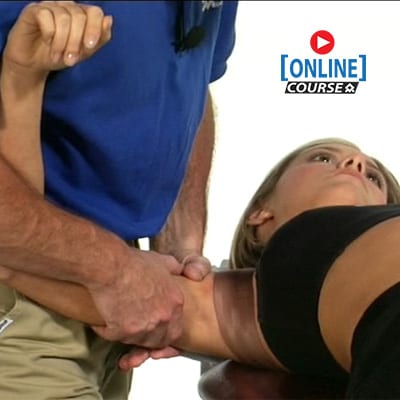Diagnosis and Management of the Shoulder and Shoulder Girdle
Course Description
8 Contact Hours / 0.8 CEUs
Chronic subacromial bursitis, impingement syndrome and rotator-cuff tendinitis are synonymous terms describing a clinical condition affecting approximately 20% of the adult population. Dr. Jean-Michel Brismèe and Dr. Phil Sizer explain in this online course how differentiate, through a precise clinical diagnosis, common sources of pain and causes of dysfunctions associated with the shoulder joint complex. By being more specific in the musculoskeletal diagnosis, treatment can become more effective and specific.
The IAOM-US Diagnosis and Management of the Shoulder and Shoulder Girdle online course takes an in-depth look at primary and secondary pathoanatomy, biomechanics, basic and specific clinical examination and interpretation, management suggestions and specific approaches to diagnose and treat shoulder and shoulder girdle related disorders.
This course emphasizes didactic or theoretical content that is delivered through online lectures and materials (emanuals*: course slides, study guide and suggested reading). This is a self-pace on-line course available 24/7. You can start and stop your viewing time as needed. It is segmented into lecture modules plus a final quiz to gauge your understanding.
The study guide is provided to help focus your learning experience and prepare you to apply this knowledge into your daily clinical practice. This online course is perfect complement to the IAOM-US Differential Diagnosis and Musculoskeletal Management of the Shoulder and Shoulder Girdle hands-on, lab-based portion.
Target Audience: PTs, OT,PTA, ATs
Educational Level: Basic
Program Agenda-Online shoulder

Objectives and Goals
At the conclusion of this program, the learner will be able to…
- Given a case study of one of the most common musculoskeletal pathologies of the shoulder joint and shoulder girdle complex with consequent clinical dysfunctions, the learner will independently integrate the anatomic, physiologic and biomechanical findings into a differential diagnosis report.
- Accurately identify at least one common clinical dysfunction of the shoulder region in 3 different patient scenarios.
- Identify 3 effective treatment interventions for acute, recurrent and chronic shoulder region dysfunctions and related pathologies.
- Design a treatment plan for a patient with acute dysfunction of the shoulder.
- Design a treatment plan for a patient with recurrent or chronic shoulder dysfunctions.
Pre-approved in the following states
Contact info@iaom-us.com to verify approval in your state. Please contact us if you hold a Florida license.
For Pre-Approvals see the PDF - Continuing Education Accreditations & Approvals Requested and/or Received by Organization: Download PDF File
Disclosures:
- Financial: The instructor(s) receive an honorarium for presenting this course.
- Non-financial: The instructor(s) have no relevant non-financial relationships to disclose.
- Partial credit is not available. For online courses, passing module assessments and completing the course evaluation is required to earn continuing education credit. For live courses, attendance is confirmed by signing the attendance sheet at the course; ensure name and professional license number are accurate, and initial both morning and afternoon attendance.
Instructor

Jean-Michel Brismée
Instructor

Phillip S. Sizer Jr.
Price
- $99
| I understand it is my responsibility to confirm the IAOM-US has CCUs approved for this course in my state and/or inform IAOM-US what is required to obtain CCU approval. Please review our policies for Refunds, Cancellations, EULA |

